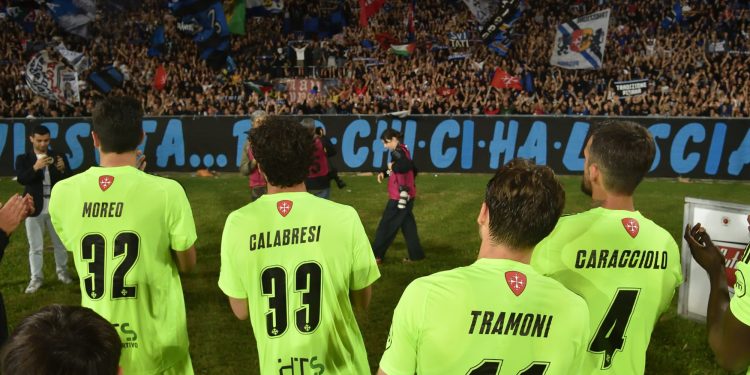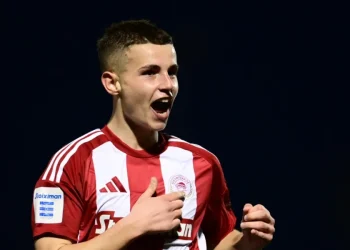“We’ve grown, we’ve fought, we’ve risen” was a key message in a video put up on Pisa Sc’s social media in July, and those words could not put it any better as the club look to lean into the future after getting promoted back to the top flight of Italian football, finishing runners up in last season’s Serie B campaign.
This is after a long thirty four year absence from the Serie A, where the club has seen turmoil problems, from poor ownership, to relegations to regional divisions. They have even reformed as a club twice in those thirty four years. The glory days of 1983-1991, where Pisa competed in the Serie A in six of those seasons, and had incredible players to wear the shirt such as Wim Kieft and Diego Simeone had long passed as distant memories for lifelong Pisa fans.
The turmoil era
Throughout the 1980s, whenever Pisa did get relegated from the Serie A, they bounced straight back up, becoming Serie B champions in both 1985 and 1987. Following relegation in the 1990-91 season, Pisa’s best players started to leave, missed opportunities occurred and the Serie A glory days were well and truly a distant memory.
1994 saw the club relegated from the Serie B, meaning dropping down to Serie C1, however the club went into administration soon after, going bust and reforming as “Pisa Calcio”. They entered the Eccellenza Toscanna league, the 5th tier of Italian football.
The 1990’s tested the hearts and commitment of the Pisa fanbase as well as the existence of their beloved football club.
Compounding turmoil continued on the turn of the century as 2002 saw a German sheppard dog being appointed as club president. This appointment was made by new owner and controversial figure Maurizo Mian, who claims that his dog’s great grandfather, Gunter III received $400 million inheritance from its owner Countess Karlotta Leibenstein. A Netflix documentary ‘Gunters millions’ , in which Maurizo features in, reveals the real story of Mian’s fortunes, debunking the myth and entire existence of Countess Karlotta Leibenstein.
Mian’s short stint as Pisa owner was unsuccessful, failing to gain promotion to the Serie B.
More financial issues occurred under the ownership Luni pomponi, failing to get their licence for the Italian third tier, thus having to reform once more as ‘A.C Pisa 1909’ in 2009. The club has progressed extremely well in recent years after much pain – Since 2019, they have been consolidating themselves in Serie B.
Pippo’s 2024-25 masterclass
Last season, Pisa appointed former Italian international Filippo Inzaghi as their head coach. While there is no debate that Filippo was a better player than his younger brother Simone Inzaghi, the latter has definitely made a bigger impact throughout their managerial careers thus far, guiding Inter Milan to two Champions League finals in three years.
Nevertheless, “Pippo” Inzaghi has a reputation as a solid Serie B manager, getting promoted with Benevento in the 19/20 season.
Pisa were far from favourites in the pre season odds, after finishing 13th in the 23/24 campaign, and clubs such as Sassuolo coming down from the Serie A with parachute payments.
‘Pippo’ is renowned for bringing defensive stability, resilience and structure to his sides, and this was evident with Pisa having the second best defensive record in the league last season, conceding only 36 goals in 38 matches. To put that into perspective, the previous season they had the third worst defensive record. In the bottom half of the league for average possession, Inzaghi’s system prioritized high tempo transitions, ideally winning the ball back in the final third of the pitch. This is highlighted by the fact they were recorded the joint fastest team in the league alongside Spezia. This also highlights the work rate of the squad, a key principle in Inzaghi’s teams, to work harder than the opposition.
The adaptability of Pisa last season was also a key reason for their success. As they didn’t have the best squad on paper, the combination of defensive resilience and high work rate was also helped by Inzaghi adapting his system on a regular basis, making them unpredictable and hard for other coaches to work out a game plan. Whilst they used a 3-4-2-1 setup often, they also used 4-3-3, 3-5-2, 3-4-3 systems from one game to another.
Leaning into the future with Gilardino in 2025-26
On the 17th of June, it was announced that Inzaghi left Pisa, to drop back down to the Serie B, and join the City Football Group owned Palermo, in their project to return back to the top flight. Pisa received €700k as a buyout clause for their manager.
They replaced him with another World cup winner in Alberto Gilardino, whose most recent job was with Genoa in the Serie A. Originally appointed as Genoa Primavera (u19 Genoa), he got the senior job on an intern role, where results improved and was offered the role on a full time basis and got the club promoted back to the Serie A.
The next season was really impressive as a more than respectable 11th place finish in their return to the top flight was achieved. This is something that the Pisa board surely identified when analysing Gilardino as their next coach, guiding Genoa to a smooth transition from Serie B to Serie A.
Another identification the Pisa hierarchy would have identified is Gilardino’s system. Whilst there are certainly some differences from Pippo’s system, the shape and tactical elements in transition will likely be similar. A 3-5-2 shape is the most likely outcome that Pisa will play under Gilardino, as he has been doing so in pre-season. With Genoa, he made the most out of his wingbacks, getting involved in build up and bombing up to the pitch.
Right wing back, Idrissa Toure may have a big role to play under Gilardino, having key physical attributes and last season scored 4 goals and 6 assists in a more reserved Inzaghi system. New signing and high profile right wing back Juan Cuadrado may give Toure serious competition for his place in the starting lineup, despite turning 37 in May. It will be interesting to see who will get the nod in Gilardino’s plans.
The loan signing of Michel Aebischer, is another standout incoming in the recruitment thus far. The Switzerland international has played a significant role in Bologna’s rise over the last few years, but only made 16 appearances last campaign. A thigh injury that sidelined him for over 3 months certainly did not help.
People should expect newly promoted Pisa to have a solid chance against the relegation drop for the upcoming season, despite the bookies disagreeing. While they are the new boys in the league, they have a very capable manager, a potential tactical system that could suit their playing squad and some hidden gems. Players like Matteo Tramoni, with successful dribbles being in the 90th percentile in Serie B last season. Jake and Matt Fenech from the “Serie A spotlight” podcast compared his profile and playstyle to former Napoli winger Lorenzo Insigne. Romanian international, Marius Marin, Pisa’s rock in the midfield last season, recorded over 90 per cent in duels won and interceptions.
Another advantage Pisa have going into the season and something they may need to rely on is their home form. They only lost 2 of their 19 games at the Arena Garibaldi last season, and keeping a fortress at home is a huge platform for any newly promoted side to take into their topflight campaign.
Doubters will argue that while some of their recruitment has been about brining in Serie A veterans, the squad largely lacks top flight experience as a whole.
Additionally Gilardino’s system certainly struggles from wide overloads from opposition, and with the quality of wingers and wingbacks in the Serie A, Pisa could get blown away out wide, dismantling their fantastic defensive record from last season.
Whatever happens this season for Pisa, they are back in the big time and certainly a team to keep an eye on as round one begins on 23 August. Sunday 24 August is when Pisa start their campaign, as they travel away to Bergamo to take on Atalanta.




















